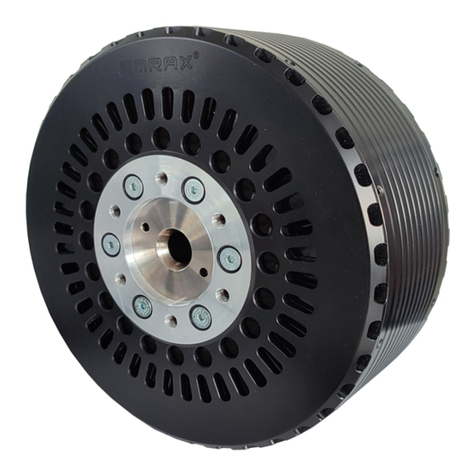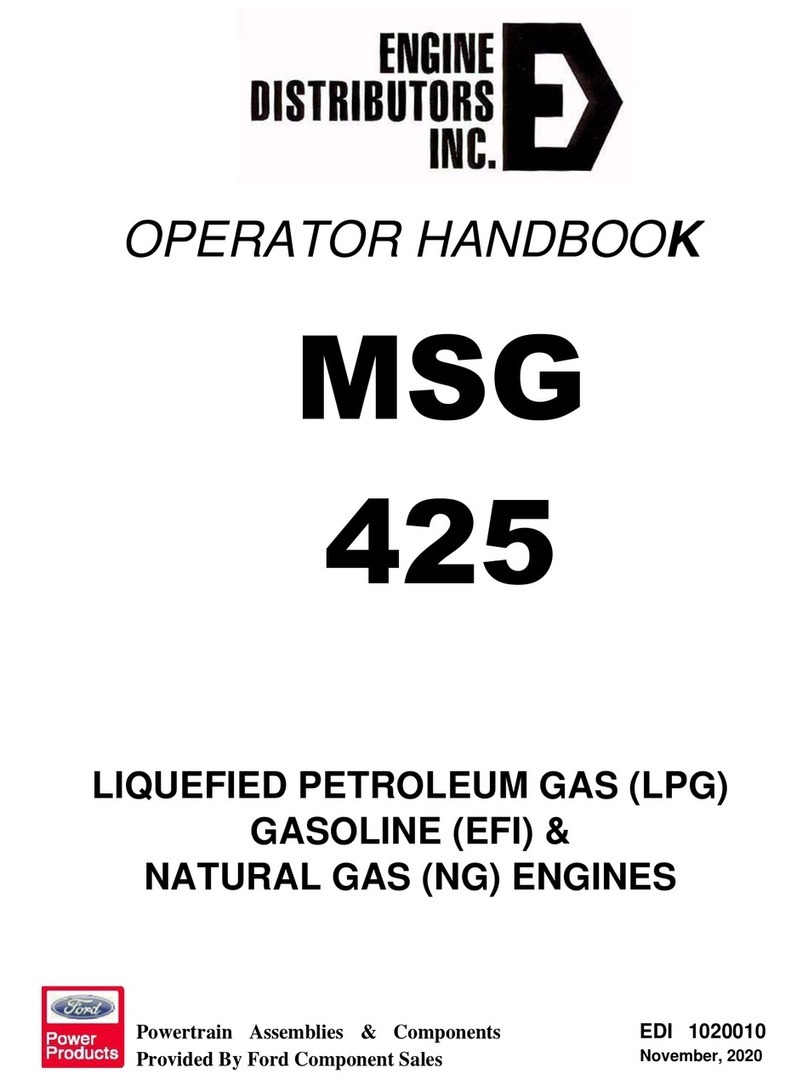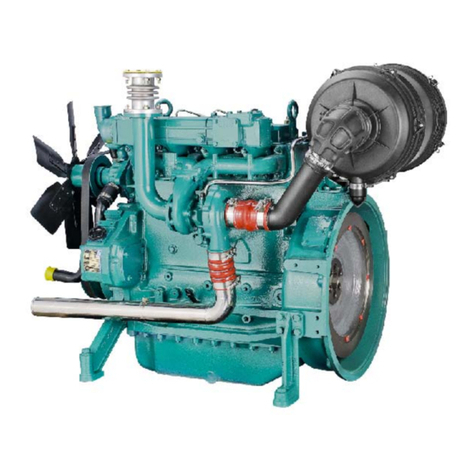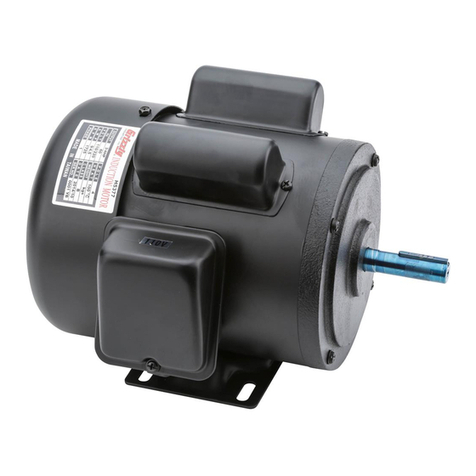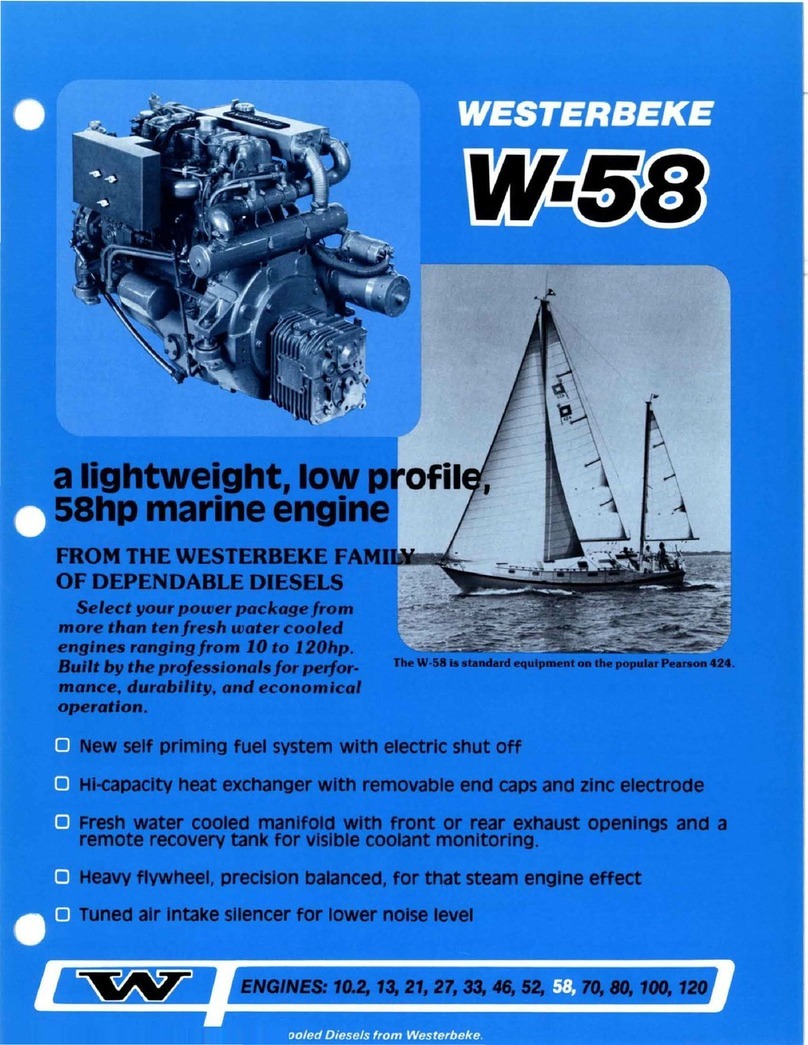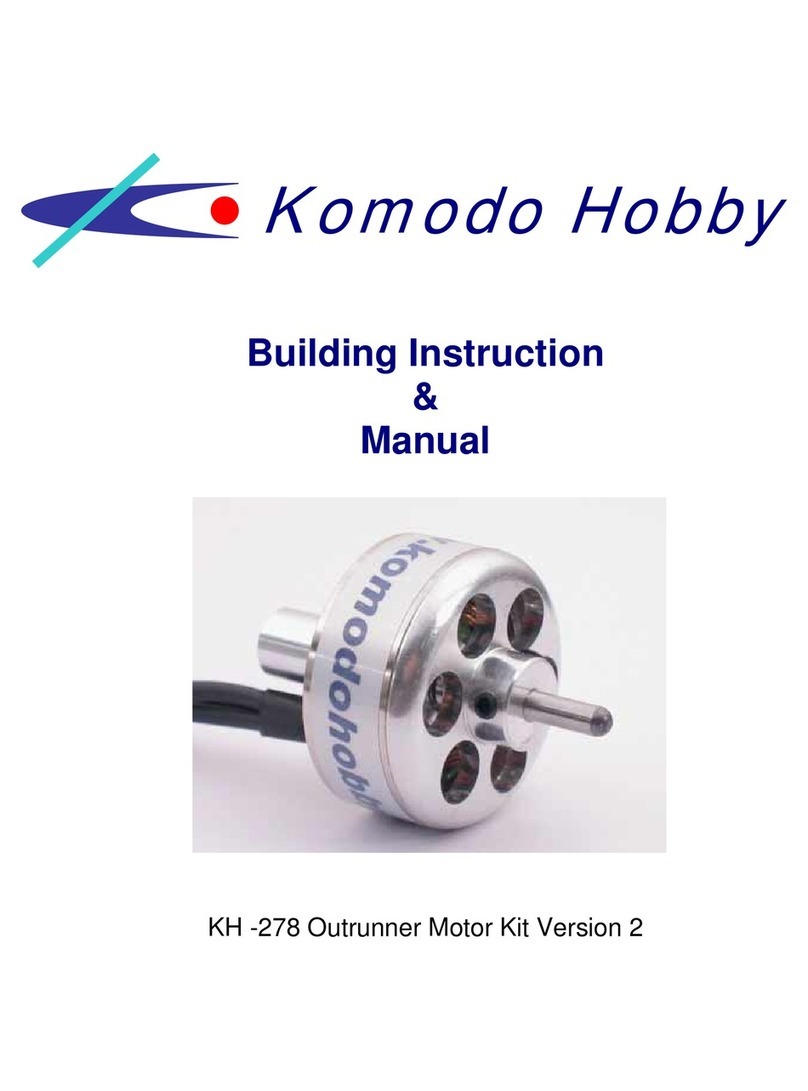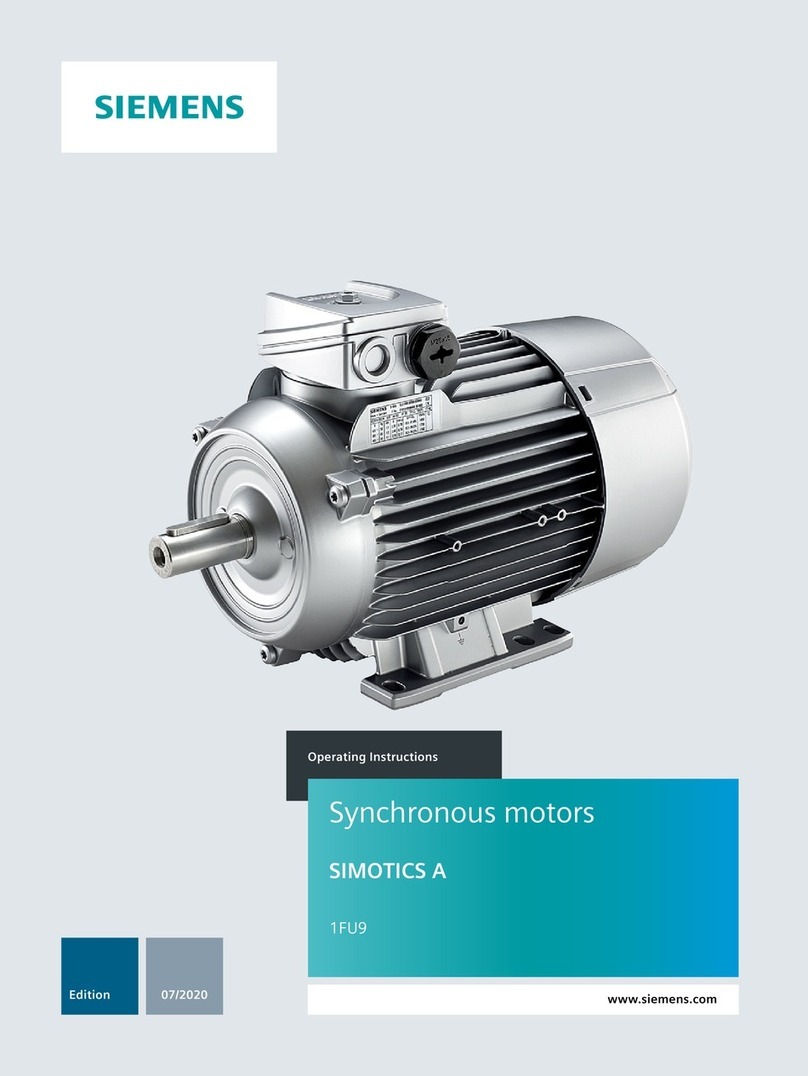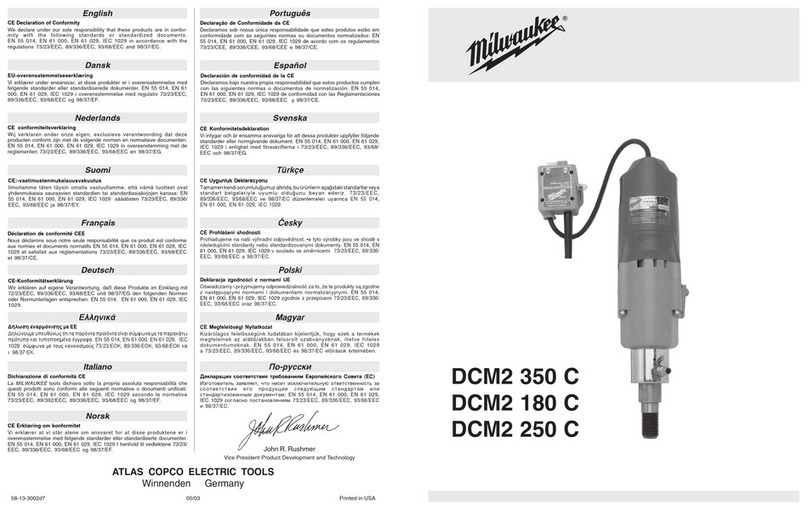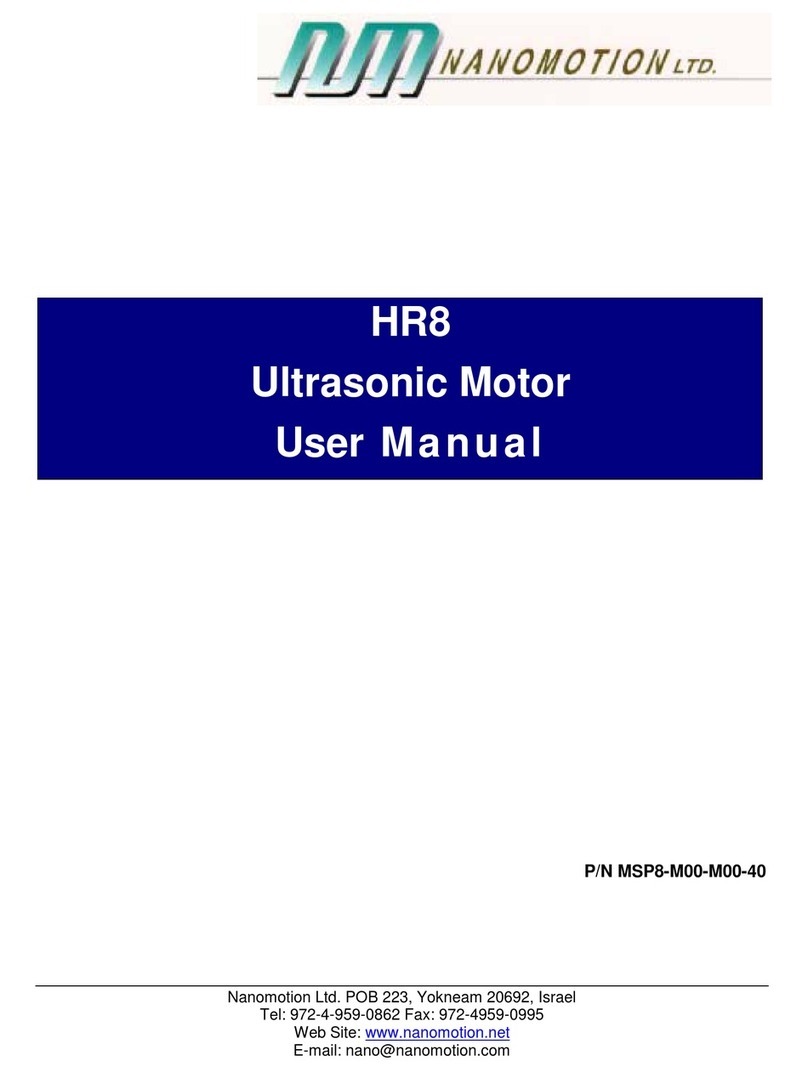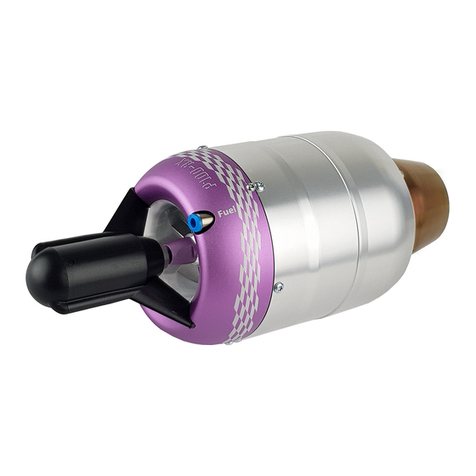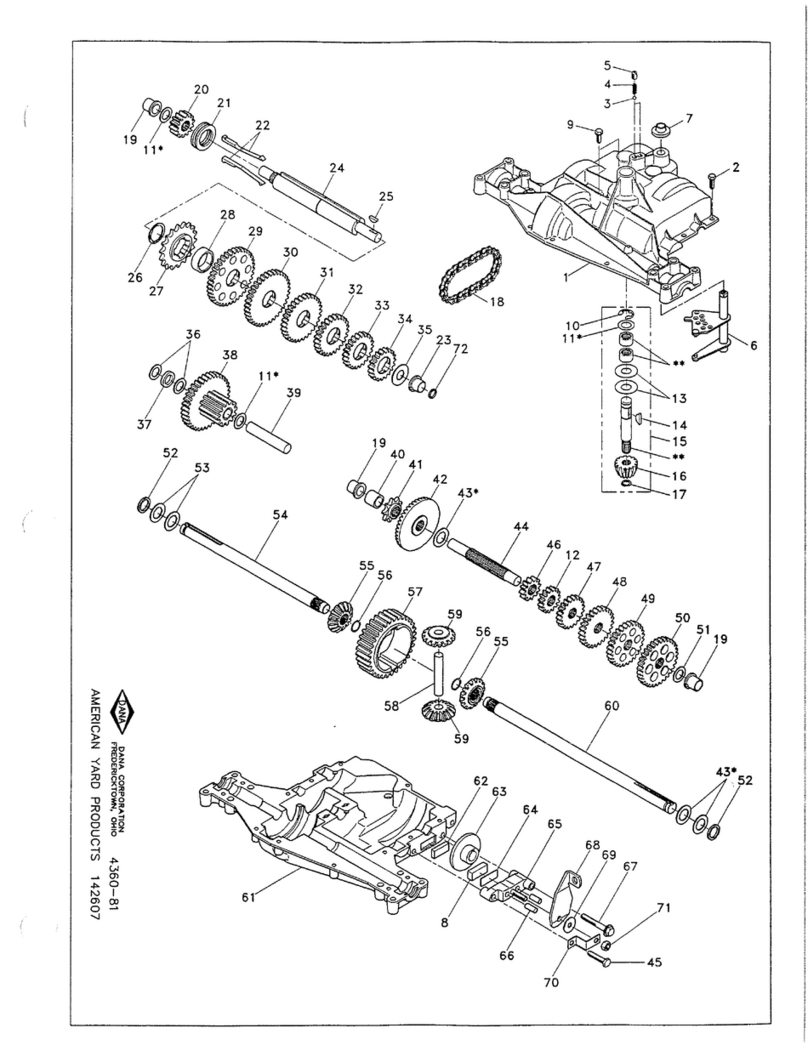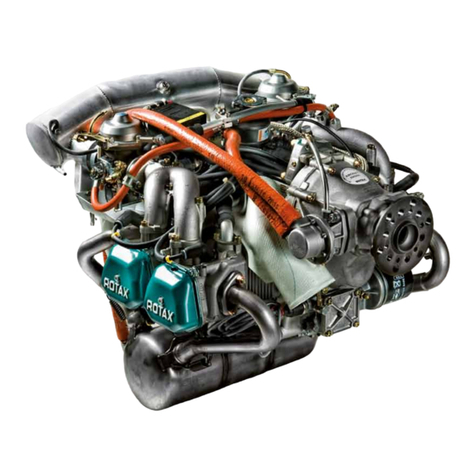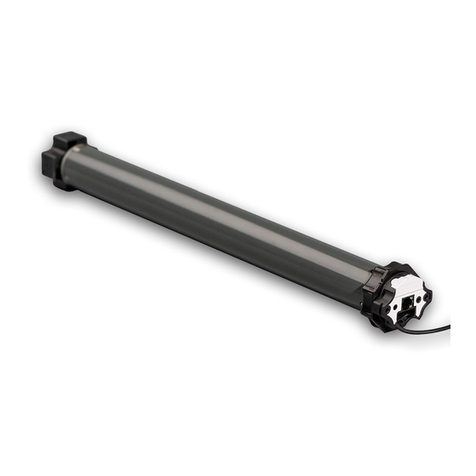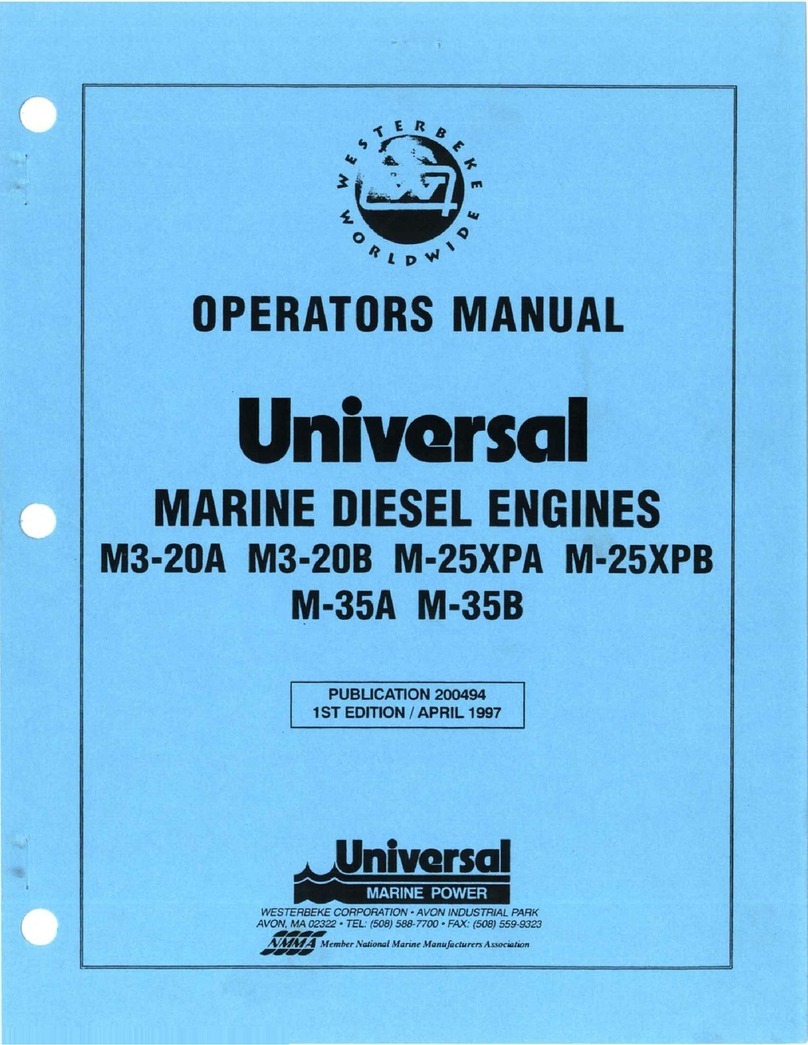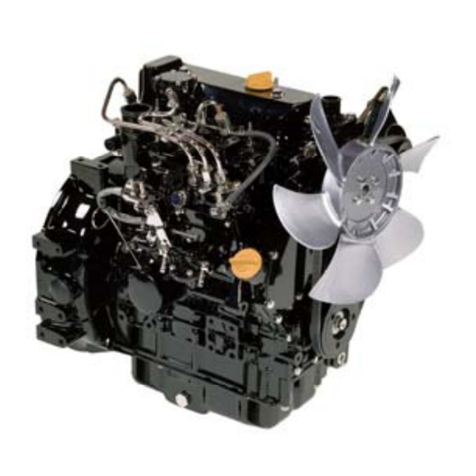EMRAX 188 Manual

EMRAX d.o.o.
Molkova pot 5
1241 Kamnik
Slovenija, EU
For additional information’s turn to: [email protected]m
All data found in this manual is subject to change without notice.
Motor Installation and Maintenance Manual

Installation and Maintenance Manual V 1.4
2
Notes:
This page intentionally left blank.

Installation and Maintenance Manual V 1.4
3
Contents
1. General information ......................................................................................................................................4
1.1. How to properly use this manual ......................................................................................................4
1.2. Safe motor operation information ....................................................................................................4
1.3. Intended use......................................................................................................................................5
1.4. Operating ceiling................................................................................................................................5
1.5. Description of nameplate..................................................................................................................5
1.6. Serial number ....................................................................................................................................5
1.7. Delivery..............................................................................................................................................5
1.8. Storage...............................................................................................................................................5
1.9. Handling.............................................................................................................................................6
2. Sensor mounting.....................................................................................................................................7
2.1. RLS RM44 encoder installation..........................................................................................................7
2.2. TAMAGAWA resolver installation......................................................................................................8
3. Motor installation....................................................................................................................................9
3.1. General space requirements .............................................................................................................9
3.2. Mounting the motor........................................................................................................................10
3.3. Motor output...................................................................................................................................11
3.4. Twin motor assembly ......................................................................................................................12
3.5. Motor cooling ..................................................................................................................................13
3.6. Coolant fittings replacement...........................................................................................................13
3.7. Temperature and sensor connection ..............................................................................................14
3.8. Power supply and connections........................................................................................................14
4. Steps prior to starting...........................................................................................................................15
4.1. Steps prior to starting......................................................................................................................15
4.2. Initial start........................................................................................................................................15
5. Maintenance ..........................................................................................................................................15
5.1. General ............................................................................................................................................15
5.2. General cleanliness..........................................................................................................................15
5.3. Vacuum and compressed air cleaning.............................................................................................15
5.4. Cleaning with water and detergent.................................................................................................15
5.5. Bearings ...........................................................................................................................................16
5.6. Failure..............................................................................................................................................16
5.7. Repair...............................................................................................................................................16
5.8. Warranty..........................................................................................................................................16

Installation and Maintenance Manual V 1.4
4
1. General information
1.1. How to properly use this manual
This installation and maintenance manual has been written to assist the user with proper procedures when
handling, installing, operating, and maintaining the equipment. All the safety warnings and instructions in
this book must be followed to prevent injury to personnel.
This manual must be kept for future reference during installation, operation, and maintenance.
1.2. Safe motor operation information
WARNINGS: High voltage and rotating parts can cause serious or fatal injuries. Qualified personnel should perform
installation, operation, and maintenance of electrical machinery. For equipment covered by this instruction book, it is
important to observe safety precautions to protect personnel from possible injury. Be sure to keep the installation and
maintenance information for future reference. All warning and cautions must be followed.
Installation
•Avoid contact with energized circuits and rotating parts.
•Avoid bypassing or rendering any inoperative safeguards or protective devices.
•Avoid use of automatic-reset thermal protection where unexpected starting of equipment might be hazardous to personnel.
•Avoid contact with capacitors until safe discharge procedures have been followed.
•Be sure the motor shaft key is captive before the motor is energized.
•Avoid long exposure near machinery with high noise levels.
•When the motor is coupled to equipment, ensure that system vibrations are within acceptable limits (per ISO
10816-1) to avoid failure of the motor.
•Use proper protective gear, care, and procedures when handling, lifting, installing, operating, and maintaining the motor.
•If eyebolts are used for lifting motors, they must be securely tightened, and the direction of the lift must not exceed a 15°
angle from the shank of the eyebolt.
•Do not use the motor shaft as a means for lifting.
•Do not lift both the motor and driven equipment with the motor lifting means.
•Do not stand on or place objects on the motor.
Maintenance
Safe maintenance practices performed by qualified personnel are imperative. Before starting maintenance
procedures, be positive that:
•Equipment connected to the shaft will not cause mechanical rotation.
•Main motor windings and all accessory devices associated with the work area are disconnected from electrical power
sources.
•The motor has been given time to cool.
Failure to properly ground the frame of the motor can cause serious injury to personnel. Grounding should be in accordance
with National and local Standards and consistent with sound practice.
These instructions do not purport to cover all the details in motors nor to provide for every possible contingency to be met in
connection with installation, operation, or maintenance. Should further information be desired, or should problems arise
which are not covered sufficiently for the purchaser’s purposes, the matter should be referred to EMRAX directly.

Installation and Maintenance Manual V 1.4
5
1.3. Intended use
Electrical motor will convert electrical energy into
mechanical rotating energy or vice versa. Its primary
usage is found in aviation, but not limited to. The
motors can also be used for traction application,
energy recuperation, … If your intended use differs
from standard applications seen on company website,
please contact EMRAX support about its appropriate
usage.
1.4. Operating ceiling
The electric motor can operate in ambient
temperatures between -40 to +60⁰C. The maximum
motor temperature allowed as recorded by internal
temperature sensor is 120⁰C.
See motor technical tables for continuous and peak
power ratings.
The maximum service ceiling is 6,500 m (21,300 ft).
1.5. Description of nameplate
Motor rating and identification data are furnished on
labels and nameplates. Nameplates provide a
permanent record of motor characteristics, plant
identification and date of manufacture. Below is an
example of a label that is attached to the shipping
package:
228 –Motor size
(188, 208, 228, 268, 348)
MV –Voltage version of the motor
(LV-low voltage, MV-medium voltage, HV-high voltage)
1361 –Serial number of the motor
22–Year of production (21-2021)
IP65–IP rating
500 Vdc –Maximum input voltage
1.6. Serial number
Every motor that is manufactured by EMRAX has a
model and a serial number, which are permanently
marked on the motor nameplate. When contacting
EMRAX please provide the serial number and
configuration of the motor.
1.7. Delivery
Prior to shipment, all motors are factory-tested and
balanced. They are wrapped in protecting wrap and
packed in boxes or bolted to a wooden base. Upon
receipt, we recommend careful handling and a
psychical examination for damage which may have
occurred during the transportation.
In the event of damage and to guaranty insurance
coverage, notify the sales office or support email with
picture evidence, without delay.
1.8. Storage
When motors are not immediately installed, they
should be stored in their upright position in a dry,
temperature-controlled place, free of dust, gasses,
and corrosive atmospheres. Other objects should not
be place on or against them. Motors stored over long
periods are subject to loss of insulation resistance
and oxidation of the bearings.
Bearings deserve special attention during prolonged
periods of storage. Depending on the length and
conditions of storage it may be necessary to change
rusted bearings. The weight of the rotor in an inactive
motor tends to expel grease from between the
bearing surfaces thereby removing the protective
film that impedes metal-to-metal contact. As a
preventive measure against the formation of
corrosion by contact, motors should not be stored
near machines which cause vibrations, and every 3
month their shafts should be rotated manually. Check
the motor for smoothness of operation before first
start, if necessary, contact EMRAX support.
Insulation resistance fluctuates widely with
temperature and humidity variations and the
cleanliness of components. When a motor is not
immediately put into service it should be protected
against moist, high temperatures and impurities, thus
avoiding damage to insulation resistance.
If the motor has been in storage more than six
months or has been subjected to adverse moisture
conditions, it is best to check the insulation resistance
of the stator winding with an insulation tester.

Installation and Maintenance Manual V 1.4
6
If the resistance is lower than 1 Giga-ohm the
windings should be dried in one of the two following
ways:
1) Bake in oven at temperatures not exceeding
90 ⁰C until insulation resistance becomes
constant.
2) With rotor locked, apply low voltage, and
gradually increase current through windings
until temperature measured with thermometer
reaches 90 ⁰C. Do not exceed this
temperature.
If the motor is stored for an extensive period, the rotor
must be periodically rotated. In case the ambient
conditions are very humid, periodical inspection is
recommended during storage.
When storing the motor, please ensure that the motor
is covered, so as not to permit any metal particles or
dust to collect inside the motor. This is especially
important when dealing with either the air (AC) or
combined (CC) cooled motor.
1.9. Handling
Raising and moving of the motors should be steady
and jointless, otherwise bearings may be harmed.
Motor connectors, moving parts or cables, should not
be used to lift the motor. The motor should be lifted
by a sling around the rotor, or via an X-bracket
attached to it. Take care, not to damage the sensors
or connectors during manipulation.
When dealing with a motor, with a weight
over 25 kg, please use lifting accessories
(cranes, fork lifts,…).
In case of unbalanced loads (such as couplings or
other attachments), additional slings or other effective
means should be used to prevent tipping.

Installation and Maintenance Manual V 1.4
7
2. Sensor mounting
Depending on the application, a motor position sensor
may be required. EMRAX offers a variety of different
positioning sensors that can be supplied together with
the motor. This chapter will cover their installation.
2.1. RLS RM44 encoder installation
Required parts:
Figure 1: Required mounting parts
Description
Note
ID
Qty.
Adapter
268, 348
only
1
1
Encoder bracket
/
2
1
RLS RM44 encoder
/
3
1
Encoder magnet set
/
4
1
M4x16 bolt
/
5
2
Tapered bolt
/
7
1
Figure 2: Encoder assembly
1. Place an adapter (1) inside the motor shaft
(this step is only required for the 268 and 348
motor types). Before inserting the part use
threadlocker glue on the faces, where the
parts are mated.
2. Insert the tapered bolt (7) into the encoder
magnet set (4) and lightly tighten it. Using
threadlocker glue supplied with the kit on the
threads is recommended.
3. Insert the encoder magnet set (4) into the
backside of the motor (as shown on Figure 2),
inside the motor shaft. Before inserting the
part use threadlocker glue on the faces, where
the parts are mated.
4. Mount the encoder bracket (2) on the back of
the motor (as shown on Figure 2). Make sure
that it is seated in its position, if necessary,
use temporary bolts to tighten it to the motor
(If the motor is liquid or combined cooled,
please make sure that the coolant fittings are
inserted, before mounting the encoder
bracket, please refer to 3.5).
5. Align the encoder magnet set (4) to the
sensor mounting flange of the encoder
bracket (2).
Use an object with a flat face and make
sure that the encoder magnet and the
mounting face of the bracket are perfectly
colinearly (in same line) aligned.
Figure 3: Magnet alignment

Installation and Maintenance Manual V 1.4
8
6. Tighten the tapered bolt (7).
7. Mount the RLS RM44 encoder (3), to the
mounting flange of the encoder bracket (2).
Use the supplied M4x16 bolts (2), to mount
the encoder. Using threadlocker glue on the
threads is recommended.
Bolt size
Recommended Torque
[Nm]
Metric
Dry
Lubed
M4x0.7
4
3
M6x1
16
13
M8x1.25
40
32
2.2. TAMAGAWA resolver installation
Required parts:
Figure 4: Required mounting parts
Description
Note
ID
Qty.
Resolver bracket
/
1
1
Adapter
268, 348
only
2
1
Washer
/
3
1
Resolver cover
/
4
1
Resolver rotor
/
5
1
Resolver stator
/
6
1
Rotor holder
/
7
1
DIN 914 set screw
/
10
4
M4x20 bolt
/
12
1
Tapered bolt
/
13
1
Figure 5: Resolver assembly
1. Place an adapter shaft (2) inside the motor
shaft (this step is only required for the 268
and 348 motor types). Before inserting the
part use threadlocker glue on the faces, where
the parts are mated.
2. Assemble the rotor of the resolver. Start by
applying threadlocker glue on the mating
surfaces of the resolver rotor (5) and rotor
holder (7) and pressing the parts together.
Then insert the tapered bolt (13) into the rotor
holder (5) and lightly tighten it. Using
threadlocker glue supplied with the kit on the
threads is recommended. Continue by
screwing the resolver rotor (4) onto the rotor
holder (7) by using the washer (3) and bolt
(12) supplied with the kit.
Figure 6: Rotor assembly
3. Insert the rotor assembly into the backside of
the motor, inside the motor shaft (as shown
on figure 5). Before inserting the part use
threadlocker glue on the faces, where the
parts are mated.

Installation and Maintenance Manual V 1.4
9
4. Mount the resolver bracket (1) on the back of
the motor. Make sure that it is seated in its
position, if necessary, use temporary bolts to
tighten it to the motor. (If the motor is liquid
or combined cooled, please make sure that
the coolant fittings are inserted, before
mounting the encoder bracket, please refer to
3.5).
5. Mount the resolver stator (6) to the mounting
flange of the resolver bracket (1). While
holding the resolver stator (6) down, use DIN
914 set screws (10) to bolt it down from the
side. Using threadlocker glue supplied with
the kit on the threads is recommended.
6. Make sure that the resolver stator and rotor
tooths are aligned as on the picture bellow.
Figure 7: Tooth alignment
7. Tighten the tapered sensor bolt (13).
8. Mount the resolver cover (4) on the back of
the resolver stator (6). Tap it gently with a
hammer until it is firmly seated in place.
Bolt size
Recommended Torque
[Nm]
Metric
Dry
Lubed
M4x0.7
4
3
M6x1
16
13
M8x1.25
40
32
3. Motor installation
3.1. General space requirements
Electric machines should be installed to allow an easy
access for inspection and maintenance. Should the
surrounding atmosphere be humid, corrosive or
contain flammable substances or particles, it is
essential to ensure an adequate degree of protection.
The installation of motors in environments where
there are vapours, gases or dusts, flammable, or
combustible materials, subject to fire or explosion,
should be undertaken according to appropriate and
governing codes, such as NEC Art. 500 (National
Electrical Code) and UL-674 (Underwriters
Laboratories, Inc.) Standards.
Under no circumstances can motors be
enclosed in boxes or covered with
materials which may impede or reduce
the free circulation of ventilating air.
Machines fitted with external ventilation
should be at least 150 mm from the wall to permit the
passage of air.
The opening for the entry and exit of air flow should
never be obstructed or reduced by conductors, pipes,
or other objects. The place of installation should allow
for air renewal at a rate of 20 cubic meters per minute
for each 50 kw of motor capacity (please ensure that
the ambient temperature of surrounding air remains
stable during motor operation).
See cooling details for each motor cooling type under
section 2.4. Motor cooling.

Installation and Maintenance Manual V 1.4
10
3.2. Mounting the motor
Motors should be mounted on firm flat base with 4
bolts (highlighted) via X bracket bought with the
motor:
Figure 8: X bracket
If factory mounting bracket is not selected, the motor
can be mounted from back side, through the back
flange of the motor utilizing a stator-spacer supplied
with the motor, or the positioning sensor bracket.
Figure 9: Stator spacer
Figure 10: Highlighted mounting plate
When bolting the motor, take care to permit a
minimum of 1.5 * bolt diameter thread turns to
protrude inside the flange. For example, a M6x1 bolt
should have at least (1.5 * 6 =) 9 turns protruding
inside the motor, which in turn means that a minimum
of (Pitch * Turns =) 9mm of bolt length should be
locking the threads.
Using a thread-locking adhesive or securing the bolts
with a safety wire/washer is advised.
A minimum of 6 bolts, evenly spaced
around the flange should be used. The
bolts must be of quality 8.8 or higher.
Use the bellow prescribed torques when bolting the
motor:
Bolt size
Recommended Torque
[Nm]
Metric
Dry
Lubed
M6x1
16
13
M8x1.25
40
32

Installation and Maintenance Manual V 1.4
11
3.3. Motor output
The motor is designed to output it’s torque via the
motor flange on the front of the motor.
Figure 11: Motor flange
Custom flange can be manufactured, or a flanged
shaft (FSI) can be bought from EMRAX. Please find a
table with appropriate bolts and required torque for
tightening them under twin installation chapter.
If custom shaft is used, it should be designed to align
with the inner bore of the motor flange. The tolerance
of the shaft where in contact with the bore should be
g6.
When bolting a custom shaft to the
motor, make sure that the bolts are
not protruding inside the motor.
After installation, check for
smoothness of rotation by hand
turning the motor.
The electric motor should be accurately aligned with
the driven machine. An incorrect alignment can cause
bearing failure vibrations and even shaft rupture.
It is recommended to use a coupling between the
motor and the driven shaft.
The best way to ensure correct alignment is to use
dial gauges placed on each coupling half:
Figure 12: Alignment measurement
The space between coupling hubs should be
maintained as recommended by the coupling
manufacturer. Shaft offset should not exceed 0.03
mm. Angular misalignment should be less than that
recommended by the coupling manufacturer.
Hammers should be avoided during the fitting of shaft
flanges or pulleys to the motor. The fitting with the aid
of hammers leaves blemishes on the bearing races.
These initially small flaws increase with usage and
can develop to a stage that completely impairs the
bearing.

Installation and Maintenance Manual V 1.4
12
3.4. Twin motor assembly
EMRAX can supply parts necessary to combine two
motors to form a twin motor configuration.
A twin motor configuration consists of two motors:
-Motor with extended shaft (ESO)
(Front motor)
-Standard motor + addition of FSI shaft
(Rear motor)
Figure 13: Twin assembly
Figure 14: FSI shaft (Flanged Shaft Inner splines)
Mounting the motors together:
1. Mount the FSI shaft to flange of the rear
motor
In the table below, you will find an appropriate
length of the bolts for bolting the motors
together with our FSI shaft. It is
recommended to use locking washer and
thread locking glue on the bolts. Using bolts
of grade 8.8. or higher is required. After the
FSI shaft is secured to the motor, check for
smoothness of operation.
Motor
size
Bolt size and
length
Torque
[Nm]
Qty.
188
M6x20
13
6
208
M8x25
32
6
228
M8x25
32
6
268
M8x30
32
6
348
M10x35
70
6
2. Insert keys into key slots on the ESO shaft on
the front motor.
Motor size
Key used
(DIN 6885)
Qty.
188
A4x4x32
4
208
A5x5x40
6
228
A5x5x40
6
268
A6x6x40
6
348
A6x6x50
6
3. Slide the two motors together. It is prohibited
to use excessive force or hammer during this
step.
Take note that it is only possible to use a positioning
sensor on the rear motor. A single encoder with an
encoder signal splitter device, that can then feed
multiple ESC’s, or a tandem resolver configuration can
be used.
If twin configuration will be ordered from factory, it
will come mounted as in the bellow picture:
Figure 15: Twin assembly with acessories
The axial length of the motor will depend on your
application. When the motors are slided together,
please ensure 2-10mm of axial clearance from its end
position.

Installation and Maintenance Manual V 1.4
13
Both motors must be secured (bolted)
to the structure when using the twin
configuration. Make sure that when
bolting the two motors, you are not
imposing any radial or axial force.
3.5. Motor cooling
In case of using liquid or combined cooled motor
(LC/CC), coolant needs to be supplied to the motor at
rates given in the bellow table, according to their
designation:
Designation
Min. flow
rate
Pressure drop
(6 l/min)
Coolant
volume
(ml)
188
6 l/min
0.3 bar
80
208
6 l/min
0.5 bar
100
228
6 l/min
0.5 bar
100
268
6 l/min
0.5 bar
100
348
6 l/min
0.3 bar
140
Water inlet temperature should not exceed 60°C.
Maximum inlet pressure should not
exceed 2 bar(g). No particles greater
than 50 μm are permitted.
Water cooling channels are symmetrical in design, its
input and output can be interchanged. It’s important
to deaerate the motor when connecting to coolant
supply. The preferred way is using a vacuum on the
outlet.
Demineralized water or glycol mixture are the
preferred coolant options. Do not expose the motor
directly to salt water, as internal damage may occur.
Rubber hose of inner diameter 10mm should be
installed and secured with a clamp on the coolant
fittings.
Under no circumstances can motors be
enclosed in boxes or covered with
materials which may impede or reduce
the free circulation of ventilating air.
Machines fitted with external
ventilation should be at least 150 mm from the wall to
permit the passage of air.
AC –air cooled motor is designed for aviation
applications where there is a sustained velocity of air
circulating the motor. The parameters found in data
sheet are measured at an air flow rate of 20 m/s with
a temperature of 20 ⁰C.
The motors can be used in an ambient flow and
temperature environment, however, expect the
continuous duty cycle of the motors to be much
lower. Please refer to EMRAX support on advice
regarding your application.
CC (combined cooled) motor can be used as only a
water-cooled motor (see above table for pressure
drops and flow rates) or as a combined (see AC
requirements). Please refer to LC motor data in case
you are only using water cooling.
Please be advised that AC and CC motors are subject
to (metal) particle ingress. Take caution when
handling and transporting the motors.
Motor temperature shouldn’t at any
moment exceed 120°C, as recorded by
motor temperature sensor.
It is advised that when firstly dealing the motor, the
current derating point is set at 100°C.
3.6. Coolant fittings replacement
Coolant fittings are fitted in place and secured with an
over flange covering the overlap.
Sealing is done with O-rings. The standard O-rings are
VMQ70 9x1.5.
Figure 16: Required mounting parts

Installation and Maintenance Manual V 1.4
14
To install the fittings to the motor:
1. Grease and install the O-ring onto the coolant
fitting
2. Press the fitting into the cooling channels of
the motor, while gently rotating it from side to
side
Figure 17: O-ring mounting
3.7. Temperature and sensor connection
The default temperature sensor built into the motor is
type KTY 81-210. The wires coming out of the motor
are naked with a cross-section of 0.75mm2. The wires
can be orientated either way.
There are several selections on motor position sensor
depending on your motor controller choice. Please
turn to their respectful manufacturers to get the
required info on wiring, shielding and colour codes.
3.8. Power supply and connections
Turn to motor manual according to motor nameplate,
to find suitable data on the voltage and current
required by the electric drive.
The power cables must comply with established
practice and standards and be properly insulated and
rated for the current draw; the connection cabling and
cable cross sections must comply with EN 60204.
When dealing with electrical
connections, ensure that the system is
not under voltage.
The use of electro-insulating gloves is recommended,
when dealing with high voltage electrical connections.
Using an IMD (insulation monitoring device), when
using voltages higher than 48V is advisable.
Check that the motor's wires are properly tightened
down to the cable shoes with positive locking (DIN
980, locking washers or similar).
Ensure insulation on motor connections by using heat
shrinks or similar. For watertight connection we
recommend using adhesive lined heat shrink tubing.
Motor mounting point should be shielded to the main
ground of the system.
Power cables must be supported at a maximum
distance of 200 mm from the connection. Resting the
weight of the cable on the motor connections can
result in their dynamic failure.
Figure 18: Cable support example

Installation and Maintenance Manual V 1.4
15
4. Steps prior to starting
4.1. Steps prior to starting
WARNING:
If the motor has been in a
damp location, dry it out
thoroughly before
operating. Before
energizing the motor for the first time or after an
extended shut down, it is advisable to check the
insulation resistance, power supply and mechanical
freedom of the motor.
4.2. Initial start
WARNING:
Do not touch or reach into
moving parts, while the
motor is operating!
Whenever possible, examine the interior of the motor
for loose objects or debris which may have
accumulated and remove any foreign material.
If possible, turn the rotor by hand to be sure, that it
rotates freely.
Check all connections with the connection diagram.
Check all accessible factory made connections for
tightness to make sure none has become loose during
shipment.
When the driven load is likely to be damaged by the
wrong direction of rotation, it is best to uncouple the
motor from its load during the initial start and make
certain it rotates in the correct direction.
After inspecting the motor carefully, make the initial
start by following the regular sequence of starting
operations as prescribed by motor controller
manufacturer.
In the event of excessive vibration or unusual noise
disconnects the motor from the load and check the
mounting and alignment. If the issue is not resolved,
please contact EMRAX support for further
instructions.
5. Maintenance
5.1. General
When the motor is in operation, examine the motor at
regular intervals depending on the service. Check the
following items:
-Make sure the ventilation openings are clear
and unobstructed.
-General cleanliness.
-Check the condition of shaft seals and
replace if necessary.
-Check the condition of connections and
mounting and assembly bolts.
-Check the bearing condition by listening for
any unusual noise, vibration measurement,
bearing temperature, inspection of spent
grease or SPM bearing monitoring.
5.2. General cleanliness
Motors should be kept clean, free of dust, debris, and
oil. Soft brushes or clean cotton rags should be used
for cleaning. A jet of compressed air should be used
to remove non-abrasive dust and any accumulated
grime. Oil or damp impregnated impurities can be
removed with rags soaked in a suitable solvent.
5.3. Vacuum and compressed air cleaning
Compressed air or suction should be used to remove
loose dirt and dust from air and coolant passages.
Care must be taken to make sure the air
is dry and that the pressure of not more
than 2 bar(g) is used.
5.4. Cleaning with water and detergent
Water-solvent mixture is a very effective way in
cleaning coolant channels against accumulated dirt.
Care must be taken to make sure that
the pressure of not more than 2 bar(g)
is used, and that the temperature never
exceeds 90 ⁰C.

Installation and Maintenance Manual V 1.4
16
5.5. Bearings
Bearings are assembled and pretensioned in factory
and are greased for its entire life cycle. Their
appropriate life cycle is to be determined by a
customer using their boundary conditions. In case of
bearing failure, please contact EMRAX representative
or contact EMRAX support directly for inspection or
possible replacement.
5.6. Failure
WARNING: An extreme
overload or electrical
failure may result in
heating or arcing which
can cause the insulation
to give off noxious fumes. All power should be removed
from the motor circuit as a precaution even though the
circuit has overload protection. Personnel should not
approach the motor until adequate ventilation of the
area has purged the air of fumes. When covers of a
motor are removed after a failure, care should be
observed to avoid breathing fumes from inside the
motor. Preferably, time should be allowed for the motor
to cool before attempting any examination.
WARNING: Water
should not be applied to
any electrically
energized equipment
because electric shock
could result in serious or fatal injury. In case of fire,
disconnect all power and use a carbon dioxide
extinguisher to quench the flame. Before operating any
motor after a suspected failure, it should be inspected
for damage.
5.7. Repair
If suspecting motor failure, please contact EMRAX
representative or contact EMRAX support directly for
further instructions regarding the motor repair. The
following must be sent to EMRAX to process a motor
repair:
• Original nameplate from the failed motor.
• Copy of the original invoice or invoice # for the failed
motor.
• Brief description of the failure for quality control
purposes.
• Please send request no later than 30 days after
failure.
Any unauthorized attempts in disassembling the
motor will result in warranty void, and further damage
to the motor may occur.
5.8. Warranty
EMRAX provides a limited warranty on our products
against defects in materials and workmanship for a
period of twelve (12) months, from the date of
delivery.
During the warranty period, EMRAX will repair or
replace, at no charge, products or parts of a product
that proves defective because of improper material or
workmanship, under normal use and maintenance.
Repaired or replaced product will have a warranty
extended for a period of twelve (12) months from the
date of delivery.
The warranty shall be void and of no effect if the
following are performed & found on the motor:
(1) The motor has been subjected to improper
installation, storage, or handling; as well as any abuse
unsuitable for the motor;
(2) The motor was subjected to an unauthorized
repair.
(3) The motor was subject to any water damage;
(4) The motor was engaged above its rated load;
(5) The motor lacked reasonable & necessary
maintenance.
(6) The motor usage was not according to its
installation manual
(7) Improper packaging for return.
EMRAX does not cover the cost of installation,
removal, or re-testing of the new or repaired products.
EMRAX will not be liable for any costs or damage
incurred by its customers in the removal or
replacement of defective products from units in which
the products have been assembled. When processing
a warranty claim, please contact
EMRAX support and provide the following:
• Original nameplate from the failed motor.
• Copy of the original invoice or invoice # for the failed
motor.
• Brief description of the warranty claim.
• Please send request no later than 30 days after
failure.

Installation and Maintenance Manual V 1.4
17
Document Revision history:
Revision Date Author Description________________________________
1.0 06/12/2021 U.K. Initial version
1.1 22/12/2021 U.K. Revised nameplate and motor cooling
1.2 21/02/2022 U.K. Updated pressure drop values
1.3 09/03/2022 U.K. Added warranty claim, revised 2.6 and 2.4
1.4 19/10/2022 U.K Revised manual, added installation instructions
Other manuals for 188
1
This manual suits for next models
4
Table of contents
Other EMRAX Engine manuals
